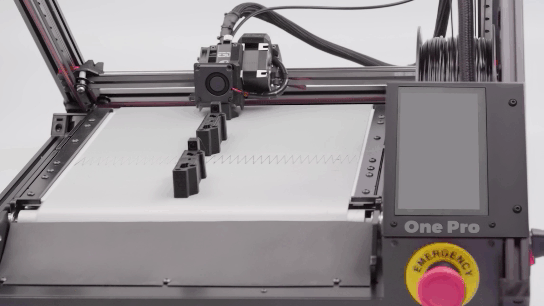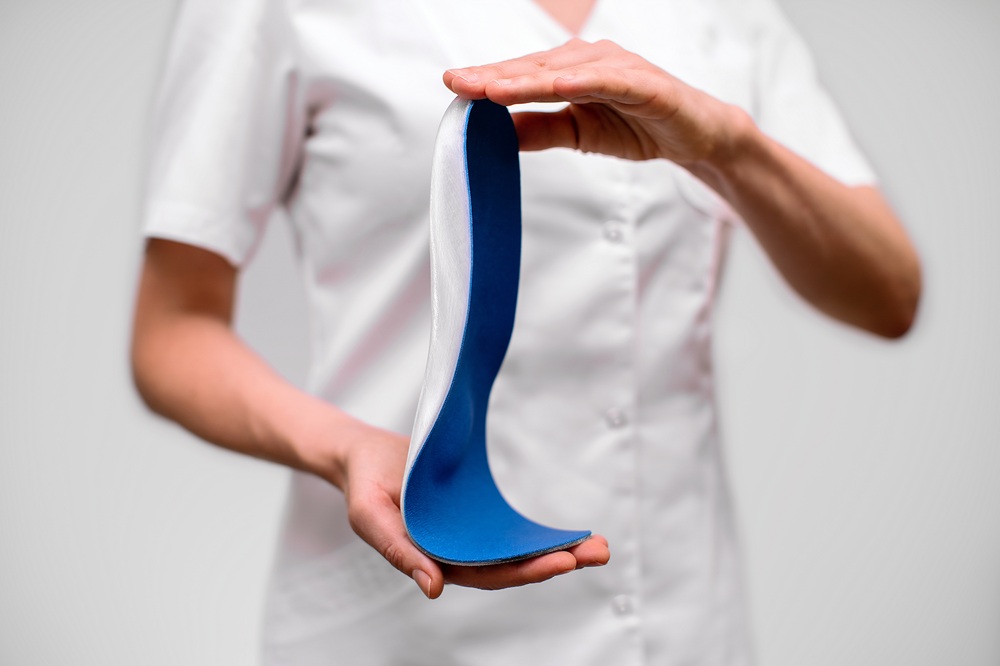Digitalization is revolutionizing orthopedic shoe technology, with LutraCAD orthopedic insoles leading this technological development. As specialized software for LutraCAD orthopedic insoles, the system enables shoemakers and orthopedic technicians to design precise and individually adapted soles, which they then manufacture using 3D printing technology. This comprehensive guide walks beginners through the fundamental steps of LutraCAD orthopedic insole construction and demonstrates how modern manufacturing techniques can complement and improve traditional shoemaking.
Understanding LutraCAD Orthopedic Insoles: The Basics
LutraCAD orthopedic insoles are based on CAD software that developers have specifically designed for the needs of orthopedic shoe technology. Unlike conventional design programs, LutraCAD orthopedic insoles take into account the anatomical characteristics of the human foot and enable the creation of precise soles based on digital footprints or scans. The software combines medical expertise with cutting-edge design technology, making complex orthopedic constructions accessible even to beginners.
Getting started with LutraCAD orthopedic insoles first requires a basic understanding of the software interface and available tools. Developers have designed the user interface intuitively, so it aligns with the workflows of experienced orthopedic shoemakers. Central elements include design tools for sole construction, the library with anatomical templates, and export functions for 3D printing. Particularly important is understanding the various construction modes, which range from simple corrective insoles to complex therapeutic soles.
Preparing Your Workspace for LutraCAD Orthopedic Insoles
Before you can begin the actual construction of your LutraCAD orthopedic insoles, you must carefully prepare your digital workspace. LutraCAD requires certain system requirements, so you should install it on a powerful computer with sufficient RAM and a good graphics card. The software works optimally with Windows operating systems and supports various input devices such as graphics tablets, which we recommend for precise construction work.
Software calibration is a crucial step that many users often overlook. Here you define the units of measurement, set material parameters, and configure export settings for later 3D printing. Correct calibration ensures that the digitally designed soles will later physically exhibit the desired properties. Additionally, you should explore the software’s various material templates and construction aids to develop a feel for the available possibilities.
Digital Foot Measurement and Data Collection
The construction process begins with digital capture of foot data, with LutraCAD supporting various input methods. These range from classic plaster casts that you can digitize to modern 3D scanners that create direct digital foot models. The quality of the source data significantly determines the precision of the later insole, which is why this step deserves special attention.
When working with digitized plaster casts, it’s important to check the scan quality and post-process if necessary. LutraCAD offers various repair tools that allow you to close holes, smooth irregularities, and correct measurement errors. The software automatically recognizes characteristic foot points and creates an anatomical reference from them, which serves as the basis for insole construction.
Modern 3D scanners enable even more precise data capture while also performing dynamic measurements during movement. This information flows directly into LutraCAD and enables even more individual adaptation of orthopedic insoles. The software can distinguish between different foot types and pathologies, so it makes corresponding construction suggestions.
Construction Techniques for LutraCAD Orthopedic Insoles
The actual construction of LutraCAD orthopedic insoles begins with selecting a suitable basic form, with LutraCAD offering an extensive library of templates for various foot types and orthopedic indications. These templates can serve as starting points for your LutraCAD orthopedic insoles, which you then individually adapt. The software uses parametric construction methods that allow changes at one point to be automatically transferred to the entire construction.
The shaping of the insole occurs through manipulation of control points and curves that define the surface. LutraCAD offers various tools for surface modeling, from simple elevations and depressions to complex therapeutic elements. Particularly important is the consideration of biomechanical principles that developers have integrated into the software and that help the designer develop medically sensible solutions.
A central aspect of construction is the correct distribution of pressure zones, as LutraCAD visualizes pressure distribution in real-time and makes it possible to identify areas with excessive load and adjust them accordingly. The software also considers the properties of various materials and can make predictions about the behavior of the finished insole.
Selecting Materials for LutraCAD Orthopedic Insoles
Choosing the right material is crucial for the success of your LutraCAD orthopedic insoles, while LutraCAD supports a variety of materials suitable for 3D printing. These range from flexible plastics to stable composite materials. Each material has specific properties such as hardness, flexibility, dampening, and durability, which you must consider when constructing your LutraCAD orthopedic insoles.
For beginners, we recommend starting with standard materials like TPU (Thermoplastic Polyurethane), which offers a good balance between flexibility and stability. This material is relatively easy to process and forgives minor construction errors. Advanced users can experiment with special materials like carbon-reinforced plastics or biocompatible materials that have special properties.
LutraCAD enables combining different materials within one insole, allowing you to create areas with different properties. This is particularly useful for complex orthopedic cases where different zones of the insole must fulfill different functions. The software simulates the behavior of these material combinations and helps find optimal solutions.
3D Print Preparation and Settings
After completing the construction, you must prepare the digital insole for 3D printing. This step, which experts also call slicing, is crucial for the quality of the printed object. LutraCAD offers integrated export functions that convert the construction into common 3D printing formats like STL or OBJ, while automatically calculating optimal print parameters for the chosen material and printer used.
The orientation of the insole in the print volume is an important factor that influences print quality and print time. LutraCAD automatically suggests optimal orientations, but also considers the specific properties of the material and desired surface quality. For complex geometries, it may be necessary to use support structures that you must remove after printing.
Layer thickness and print speed are additional parameters that you must adjust according to material and desired quality. For orthopedic insoles, a medium layer thickness of 0.2-0.3 mm is often optimal, as it offers a good balance between print quality and manufacturing time. The software can also automatically calculate the optimal fill structure, which affects both the mechanical properties and weight of the insole.
Practical Print Execution
The actual 3D printing process requires careful preparation and monitoring, which is why you should calibrate the printer and prepare the print bed accordingly before starting printing. Proper adhesion of the first layer is crucial for the success of the entire printing process. Depending on the material, you can use various adhesion aids such as adhesive spray or special printing surfaces.
During the printing process, it’s important to monitor the first layers and ensure that adhesion is correct while no deformations occur. Modern 3D printers often offer monitoring functions that automatically detect problems and stop the printing process if necessary. For longer print jobs, which can certainly take several hours for complex insoles, we recommend continuous monitoring.
After completing the printing process, you must carefully remove the insole from the print bed. Depending on the material and construction, post-processing may be required to remove support structures or smooth the surface. LutraCAD provides instructions and recommendations tailored to the respective material and construction.
Post-Processing and Quality Control
Post-processing is an often underestimated but important step in the manufacturing process. Depending on the material used and printing method, it may be necessary to smooth the surface, remove support structures, or sterilize the insole. LutraCAD offers detailed instructions for post-processing various materials and provides recommendations for the tools and techniques used.
Quality control begins during post-processing but should also include systematic inspection of the finished insole. This includes checking dimensions, verifying surface quality, and evaluating mechanical properties. LutraCAD can help define quality criteria and develop appropriate testing procedures.
An important aspect of quality control is also the biocompatibility of the materials used, as orthopedic insoles come into direct contact with the skin and therefore must meet certain safety standards. LutraCAD provides information about the approval of various materials and supports the selection of suitable materials for medical applications.
Adjustment and Optimization
The first version of an orthopedic insole is rarely perfect and often requires adjustments based on patient feedback. LutraCAD facilitates this iteration process through parametric construction methods that enable quick and precise implementation of changes. The software stores all construction steps and makes it possible to make modifications at any time.
Optimization can encompass various aspects, from adjusting the hardness of certain areas to changing the overall shape of the insole. LutraCAD offers various analysis tools that help predict the effects of changes and find optimal solutions. Particularly useful is the simulation of pressure distribution, which makes it possible to identify problematic areas before printing a new prototype.
A systematic approach to optimization includes documenting all changes and their effects. LutraCAD supports this through extensive documentation functions that make it possible to trace the development process and draw on already gained experience in similar cases.
Economic Efficiency and Effectiveness
The introduction of LutraCAD and 3D printing into orthopedic shoemaking brings not only technical advantages but can also produce economic improvements. Digital construction reduces material consumption and enables faster and more cost-effective prototype production. At the same time, you can reduce rework through precise construction and improve the quality of end products.
The amortization of the investment in software and hardware depends on various factors, such as the number of insoles produced, the complexity of cases, and the efficiency of workflows. LutraCAD offers various licensing models that make it possible to adapt costs to respective needs. For smaller businesses, it may make sense to start with a basic license and gradually expand functionality.
An important aspect of economic efficiency is also the time savings that you can achieve through digital workflows. After a familiarization period, you can perform many work steps faster than with traditional methods. Particularly in the adjustment and optimization of insoles, the advantages of digital methods become apparent, as you can quickly implement and test changes.
Future Perspectives and Development
The technology of digital construction and 3D printing continues to evolve, while developers regularly update LutraCAD with new functions and improvements. Current developments include the integration of artificial intelligence for automatic recognition of foot pathologies and the improvement of user-friendliness through more intuitive operating concepts.
The connection with other digital systems such as electronic patient records or practice management systems makes it possible to digitize and optimize the entire treatment process. This integration can further increase efficiency while simultaneously improving documentation and tracking of treatments.
The development of new materials specifically for 3D printing of orthopedic aids opens additional possibilities for innovative solutions. These include materials with variable properties that can adapt to the wearer’s needs, or biodegradable materials for temporary applications.
Conclusion and Recommendations
LutraCAD offers orthopedic shoemakers a powerful platform for digital construction and manufacturing of orthopedic insoles. While getting started requires some familiarization time, the advantages in terms of precision, efficiency, and quality justify this investment. For beginners, we recommend starting with simple constructions and gradually increasing complexity.
The combination of traditional craftsmanship and modern technology opens new possibilities for treating foot problems and improving patients’ quality of life. LutraCAD not only supports technical implementation but also offers extensive learning resources and support for getting started in digital orthopedic shoe technology.
The future of orthopedic insole care lies in the intelligent combination of medical expertise, craftsman experience, and cutting-edge technology. LutraCAD is an important building block of this development and enables even smaller businesses to benefit from the advantages of digitalization while providing optimal care to their patients.
 Serial production
Serial production
